23 Evidence-Based Health Benefits of Kale
Why Kale
Many farmer’s markets and grocery stores carry kale, but are you aware of all its health benefits?
Of all the superfoods we could eat, this leafy green from the cabbage family is loaded with nutrients.
Besides its endless health benefits, kale is easy to prepare in under five minutes.
Kale is said to be like cabbage but has a fresh flavor, is earthier, and even greener.
It should be washed thoroughly, but how do you prepare, cook, and eat kale, and what are the benefits of this potent vegetable?
History Of Kale
Evidence indicates that kale was used in Roman and Greek times.
Originally, it was a cure for drunkenness.
In the Middle Ages, it spread to Europe and Asia and eventually the rest of the world, including America.
Until the 1980s, though, not many people paid attention to this vegetable until a man named Tim Peters began to cross-pollinate it with bees.
As a result, several new forms of kale were discovered, and the popularity of this vegetable increased (3).
Today, we even have a National Kale Day, and some American celebrities are praising kale as a plant that has amazing benefits.
Even President Obama is said to have dined on kale salad at his Thanksgiving dinner.
Shown below are the top 23 benefits of this amazing vegetable (3).
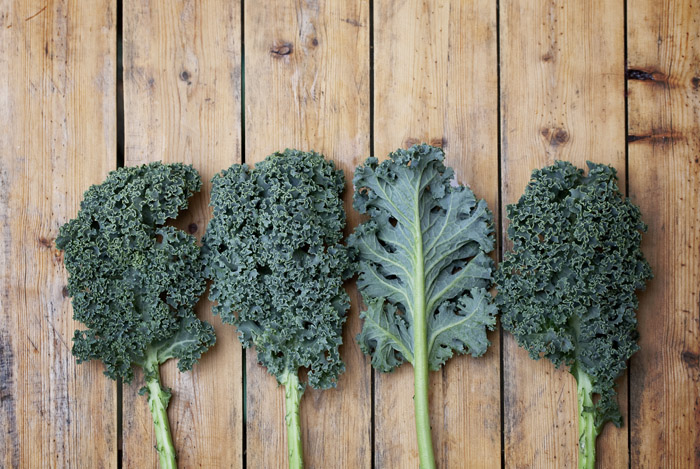
How It Grows
Kale is a leafy green vegetable from the same wild cabbage family as cauliflower, broccoli, and collards.
Unlike these, however, kale has often been ignored, which is remarkable considering its many health benefits.
Kale is also very easy to prepare, making it simple to plan meals.
It is low in calories, rich in phytonutrients, and one of the few vegetables that provide more health benefits per serving than even some standard store-bought multivitamins.
Kale does not have a particularly “friendly” fragrance, though, which is due to a sharp odor that sets it apart from other dark leafy greens.
It has a rich taste and is almost spicy like pepper.
Kale is available in 3 fundamental varieties:
- Curly—ruffled leaves and deep green hue
- Ornamental—green, white, or purple leaves with a more subdued flavor than curly’s pungent one
- Dinosauraka Tuscan kale—dark blue-green leaves with an “embossed texture”; its taste has been described as “slightly sweeter and more delicate . . . than curly kale.”
Kale can be found in the marketplace throughout the entire year but is in season from winter to spring.
Accordingly, people can buy a healthful vegetable when other healthy food options are not available during the winter months.
Also, the nutritional benefits of kale are just another reason why you should stock up the refrigerator during flu season.
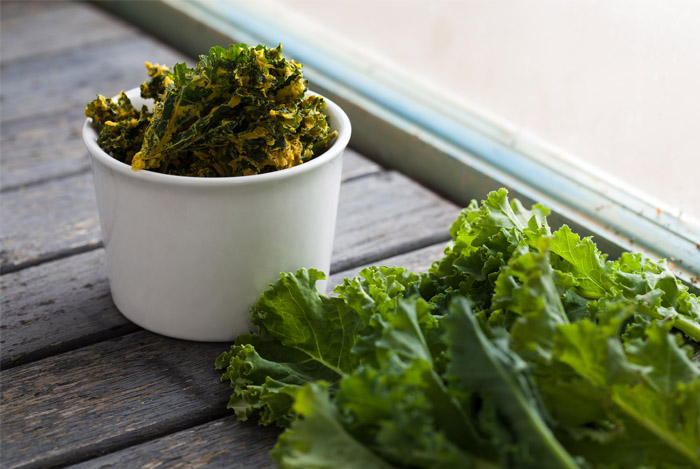
Interesting Facts
Here are some interesting facts about this unique vegetable.
Kale Tops The Nutrient Density Scale
One cup of raw kale has just 33 calories, yet contains 684% of vitamin K, 206% of vitamin A, 134% of vitamin C, plus omega-3s, iron, magnesium, calcium, folate, fiber, iron, and 2 grams of protein.
Kale Is Eaten All Around The World
Kale is an Old World food and eaten across the globe; it’s a staple in Scotland, Denmark, Italy, Kenya, Portugal, and many other countries.
Kale Does Not Cause Hypothyroidism
Although many reports claim that hypothyroidism can be attributed to eating kale, no specific case studies support the contention that eating kale causes thyroid problems.
Certain molecules in kale called “goitrogens” can compete with iodine for uptake into the thyroid.
Theoretically, a diet low in iodine (seaweed, seafood, iodized salt) and high in kale could lead to different problems.
Based on current findings, people should be more worried about eating excess amounts of iodine in kelp or seaweed.
In addition, environmental toxins, such as BVO, which is a chemical found in flame retardants and many sodas, should be a greater concern.
The World Of Kale Is Vast And Varied
Kale comes in dozens of varieties, including Gulag Stars, Iacinato, Redbor, Sea Kale, White Russian, Red Russian, Chinese Kale, Dwarf Blue Vates, Red Nagoya, and the 6′ Walking Stick Kale.
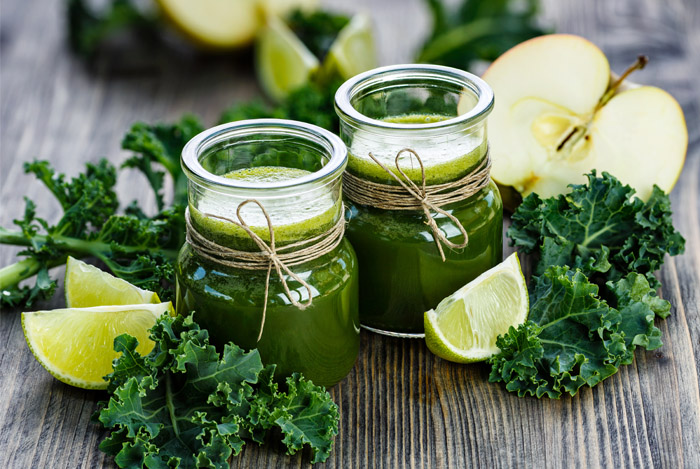
Health Benefits of Kale
Kale is being called “the new beef,” “the queen of greens,” and “a nutritional powerhouse.”
It is definitely one of the healthiest and most nutritious plant foods in existence.
It is loaded with all kinds of beneficial compounds, some of which are very powerful in medicinal terms.
Here are 23 science-backed health benefits.
Kale is Great for Depression
“Kale has been spreading to unlikely places,” according to the New York Times.
In fact, the Cheesecake Factory has added it to its menu, but why are celebrities and restaurants so crazy about it?
A psychiatrist at Columbia University is an advocate for kale and explains why many people like it: “. . . the nutrients in kale help make us feel optimistic and ward off depression” (3).
Another source says, “Unlike, say, Prozac, veggies’ side effects are positive—for example, eating them improves life for the millions of beneficial microorganisms that live in our guts and keep us healthy”.
Yet, why does kale help with mood? Actually, one reason is because of its phytonutrients molecules.
They produce carotenoid, and Harvard University recently linked carotenoids to an uplifted mood.
The plant is also packed with omega-3 acids, which can be very helpful for fighting the symptoms of depression.
The combination of protein, iron, folate, and vitamin B6, all found in kale, can create more serotonin and dopamine.
These two chemicals interact in the brain and can also help elevate mood.
One source claims that kale, along with other therapies, actually helped her become stable.
You might want to try eating some kale the next time you feel depressed.
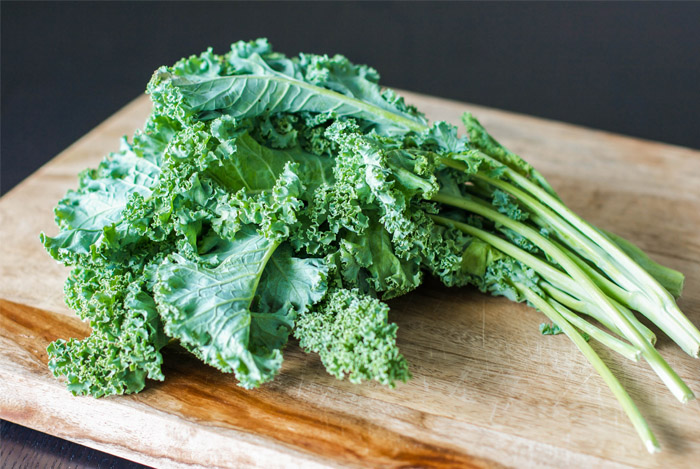
Diabetes and Kale
Diabetes develops when the body cannot produce enough insulin, and the glucose level skyrockets.
Glucose found in food is converted into energy. Without it, our bodies will not stay healthy.
25.8 million Americans have diabetes—8.3% of the U.S. population.
Some research supports that kale can be beneficial for those with diabetes.
Reader’s Digest named kale one of the 9 healthiest foods for diabetes.
The article makes the connection between sulforaphane, a compound found in kale, and the anti-inflammatory acid, which controls blood sugar and helps cardiovascular injuries.
Kale can be helpful for diabetes in other ways.
It contains, fiber, vitamins C and K, vitamin A, beta-carotene, zeaxanthin, manganese, all of which help turn protein into sugar (9).
Kale and Vitamin C
Do you have fatigue, muscle aches, or even bleeding gums?
These are just a few of the things that could affect your body if you do not have the proper amount of vitamin C.
Vitamin C is known as an ascorbic acid. It is a strong antioxidant that helps with the common cold and also helps the body form.
How are kale and vitamin C connected?
Not only does kale contain vitamin C, it also provides more of it than oranges.
134% of your daily recommended vitamin C dosage is present in a cup of kale, while an average orange contains only 113%.
Also consider that a regular-sized orange weighs 131 g, while a cup of kale only weighs 67 g.
Gram for gram, kale has more than twice the vitamin C found in an orange.
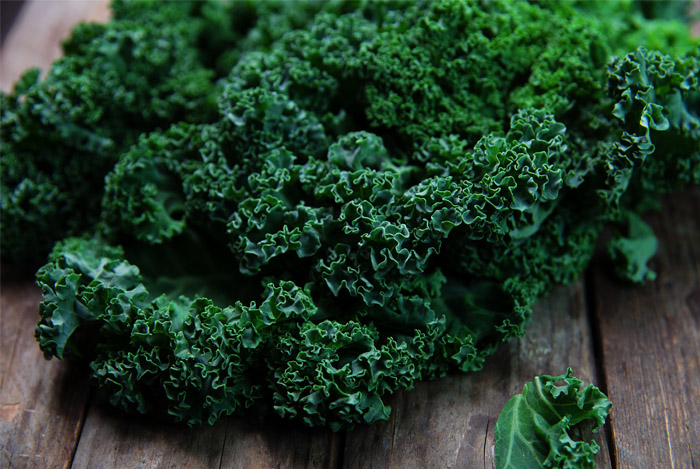
The Nutrients in Kale
Kale is very rich in nutrients and it contains the following:
- Vitamin A: 206% of the RDA (from beta-carotene). Vitamin A provides some wonderful health benefits. It can, for example, help your liver be healthy.
- Vitamin B6: 9% of the RDA. This vitamin is essential for healthy brain development and hormones, such as serotonin, norepinephrine, and melatonin to help maintain your body’s natural clock.
- Vitamin K: 684% of the RDA. This vitamin is key in providing health benefits, such as strong bones and helping to prevent heart disease.
- Manganese: 26% of the RDA. Manganese helps in many ways. For example, it fights against blood clotting and even regulates sex hormones.
- Calcium: 9% of the RDA. This vitamin helps your body stay healthy. As with several other vitamins, it helps blood to clot. Ninety-nine percent of calcium in the body are in bones and teeth, which helps them stay strong.
- Copper: 10% of the RDA. Copper can help your immune system and bones. It also helps the body make more blood cells.
- Potassium: 9% of the RDA. Potassium helps with some important functions. For example, it helps with normal body balance in your body cells and regulates body fluid. It is also an electrolyte.
- Magnesium: 6% of the RDA. This mineral stimulates 300 enzyme reactions and helps with thousands of biochemical reactions. It is also important for nutrient metabolism, muscle contractions, and many other factors, such as the creation of energy.
All these vitamins are important for your body.
How does Kale Fight Cancer
Kale is a large source of the organosulfur compound.
These compounds are a great natural way to prevent different forms of cancer.
Organosulfur is broken down into isothiocyanates, which help break down cancer cells.
It is especially valuable in fighting colon cancer, the nastiest form of cancer.
Kale helps reduce the risk of lung cancer by 39%.
In addition, it helps provide a healthy immune system, which can be very beneficial in the fight against cancer (13).
What are We Not Getting in Our Diet that Kale Supports
What are the most important vitamins that we need in our diet?
Peter Jaret from WebMD explains that calcium and vitamins A, K, D, and E are missing from our diets, and Americans also do not get enough potassium (14).
Luckily, kale is packed with these vitamins.
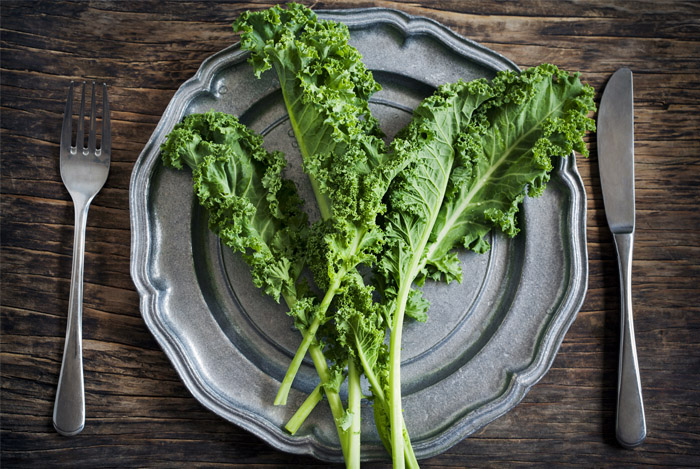
What is the Healthiest Way to Cook Kale
Kale’s benefits actually depend on the way you cook it.
When you steam kale, it provides a cholesterol aid.
Doing this causes the fiber-related components in kale to bind with acids in your digestive system.
As you digest this plant, more bile in produced in your stomach.
The more kale is exposed to heat, air, and even light, the greater the production of vitamin C.
To increase calcium in kale, it should be steamed or sautéed, which further helps increase your vitamin intake.
Kale Fights Heart Disease
Kale is saturated with potassium, and vitamins C and B6.
The latter helps create great heart health.
Mark Houston, MD, MS from Vanderbilt Medical School found that individuals who took 4,069 mg of potassium a day had a 49% decrease in ischemic heart disease when compared with those who consumed less.
Potassium also helps prevent stroke.
Twenty percent of those who consume high amounts of potassium live longer.
Kale has 349 mg of potassium in just one cup.
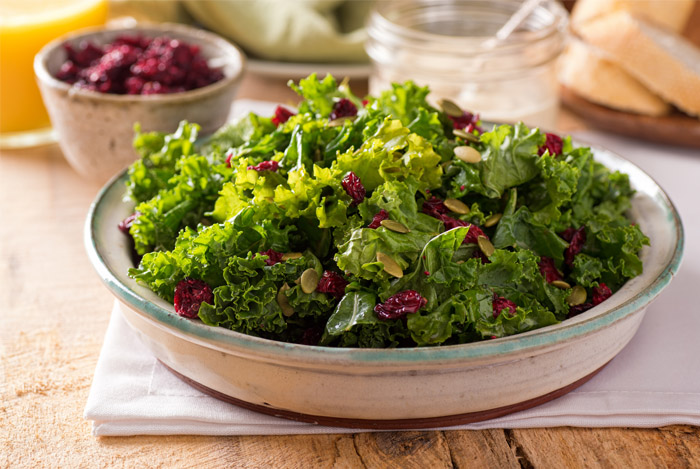
Lose Weight with Kale
Kale contains dietary fiber.
In fact, each cup contains 2.4 g of dietary fiber, which is nearly 10% of what you need to consume in a daily 2,000 calorie diet.
Dietary fiber reduces hunger and is a great tool for weight control.
Harvard University acknowledges that kale has a high amount of protein, which can also make you feel full. (18)
One cup of kale contains only 33 calories.
Combining it in a vegetable soup, chicken broth, or even tomato paste will fill you up and help you lose weight.
If you eat a lot of kale, how will you get the nutrients you need?
Actually, kale is not only a filling, low-calorie food but also contains many of the vitamins you need for your everyday diet.
It is packed with vitamins C, A, and K, calcium, potassium, and many other minerals.
These can help you lower blood pressure by giving you an important amount of nutrients.
Shed those pounds with kale!
Kale Protects Your Eyes
Lutein and zeaxanthin are important for eye health.
These two nutrients can actually be found in your eyes but are also found in kale (19).
Both of these nutrients actually make the plant turn slightly yellowish.
Remember this when choosing the right vegetables for your eye health (19).
It also contains vitamin C and all the combinations of antioxidants that are very helpful in protecting your eyes from UV rays.
Furthermore, kale helps against air pollution and even cigarette smoke.
Road to a Healthy Pregnancy
Packed with nutrients, kale is one of the best prenatal foods around.
For most expectant mothers, it can taste like health food.
Why is kale a good food for pregnancy?
It has lots of nutrients, which is important for maintaining a mother’s health as well as delivering a healthy child.
The three types of kale an expectant mother should enjoy are:
- Curly—it is great in stir-fries, smoothies, and even soups.
- Lacinato—this type of kale has a more solid texture and even a stronger flavor. It would be great when sautéed or even in salads.
- Red—it has thinner leaves and would also be tasty in salads or soups.
You can eat healthy and enjoy kale when you are pregnant.
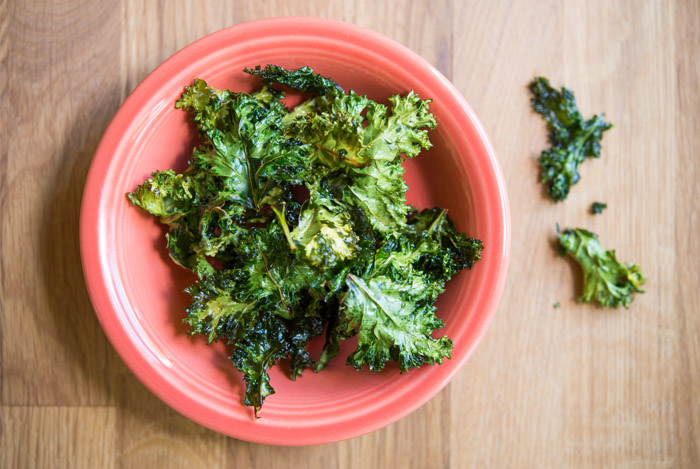
Kale is Packed with Antioxidants
Kale, like other leafy green vegetables, is very rich in antioxidants, including vitamin C, beta-carotene, as well as various flavonoids and polyphenols (23).
Simply put, antioxidants counteract oxidative damage by free radicals in the body (24).
Oxidative damage is thought to be among the leading causes of aging and many other diseases, including cancer , but many substances that are antioxidants also have other important functions.(25)
Some of these important antioxidants are the flavonoids quercetin and kaempferol, which are found in relatively large amounts in kale (26).
These substances have been studied intensely and have powerful anti-inflammatory, antiviral, anticancer, antidepressant, cardioprotective, and blood pressure lowering effects (27, 28, 29).
Kale is Rich in Vitamin K
Vitamin K is an important nutrient for many health issues (30).
It is a natural blood thickener, regulates blood sugar levels, prevents calcification of the arteries, and may have antioxidant benefits.
By consuming kale, you get vitamin K1, the type found in leafy green vegetables, and vitamin K2, which is found in fermented soy foods and various animal products.
This vitamin reduces the risk of heart disease and osteoporosis (31).
A single cup of raw kale has almost seven times the recommended daily amount.
Kale is Rich in Beta-Carotene
Kale is often believed to be rich in vitamin A, but this is not true.
It is actually rich in beta-carotene, an antioxidant that the body can turn into vitamin A (32).
For that reason, kale can be important for increasing your body’s level of this vitamin (33).

Kale Provides Rare Minerals
Kale is a good, plant-based source of calcium, a nutrient that is essential for bone health and is important for proper cellular function.
It is also a decent source of magnesium, an important mineral that most people lack.
Eating plenty of magnesium reduces the risk of type 2 diabetes and heart disease, thanks to its protective properties (34).
Kale is also a source of potassium, a substance that conducts electricity in the body.
Adequate potassium intake has been shown to reduce the chance of high blood pressure and heart disease (35).
Kale also has an advantage over such leafy green vegetables as spinach regarding oxalates.
Namely, kale is low in this substance, which is shown to prevent minerals from being absorbed in some plants (36).
Kale is Good for Brain Health
Kale has at least 45 different flavonoids, thus being able to reduce the risk of stroke.
It also contains 7% of daily iron needs.
Iron helps in the formation of hemoglobin, the main carrier of oxygen to cells of the body.
It is also critical for brain and muscle health.
Moreover, kale’s omega-3 fatty acids are good for brain health.
According to one study, omega-3 fatty acids are important for performance, brain memory, and behavioral function (37).
Sulforaphane, like kale’s other antioxidants, has anti-inflammatory properties, which may help cognitive function, especially after a brain injury (38).
Kale Lowers Cholesterol
Another benefit of kale is its high fiber content.
Fiber is essential for detoxifying and cleansing the body as well as helping lower cholesterol because it picks up excess cholesterol compounds in your gut and pushes them out in the elimination process.
While it has been known that kale lowers cholesterol levels when raw or cooked, a new study shows that steaming it can offer you the greatest benefit.
The fiber in steamed kale binds better to bile in the digestive tract, resulting in more cholesterol being removed (39).
Kale is Good for Bone Health
Due to its calcium content, kale has been listed as one of the “good-for-your-bones” foods.
Inadequate intake of vitamin K has been associated with a higher risk of bone fracture (41).
On the other hand, adequate intake of vitamin K is essential for good health, improves calcium absorption, and reduces urinary excretion of calcium (42).
Calcium helps prevent bone loss as well as maintain a healthy metabolism and alkaline environment in the body.
In fact, one cup of cooked kale has about the same amount of calcium as one cup of cow’s milk (43).
Kale is Good for Skin and Hair Care
For those looking to get clearer skin, sulfur helps remove toxins from the skin, scar reduction, and collagen production.
Beta-carotene, the carotenoid that is found in high amounts in kale, is converted by the body into vitamin A as needed (44).
A cup of cooked kale provides 885 mcg of retinol A equivalent, the nutrient essential for the growth of all bodily tissues, including hair and skin, as well as for the production of sebum, the oil which helps keep hair and skin moisturized.
Eyesight and reproductive and immune function also rely on vitamin A.
A cup of cooked kale provides 53.3 mg of vitamin C, which is needed to build and maintain collagen, the key protein that keeps skin looking youthful and aids in wound healing (45, 46).
Also, vitamin C supports iron absorption.
Kale is rich in both vitamin C and iron (1.17 mg per cup, cooked), which could help prevent hair loss associated with iron deficiency (47, 48).
Though iron supplements should not be taken unless patients have anemia, natural sources of iron, such as kale, may help maintain hair.
Kale is Packed with Manganese
When you think of dietary minerals, you probably think first of iron or calcium.
If you spend a lot of time thinking about nutrition, you may also think about zinc or magnesium.
Certain trace minerals, however, which are generally not well known, are essential for proper body function.
One of these is manganese, an important mineral for several health reasons.
Manganese helps the body build strong bones and also aids in bone care because it is part of an enzyme known as manganese superoxide dismutase, which is critical in the fight against UV damage from the sun (49).
Kale is Rich in Calcium
Milk is often promoted for its calcium content, but kale has more calcium than cow’s milk.
A serving of kale has more absorbable calcium than a small carton of milk.
According to one study, kale has excellent absorbability for its calcium (4).
Kale has 150 mg of calcium per 100 g, while milk has 125 mg.
When cooked, however, kale does lose a substantial amount of calcium.
So, if you buy kale to reap the benefits of its calcium content, eating it raw is best.
Additionally, some people do not like milk or are just lactose intolerant.
If you are one of them, turn to kale and other calcium-rich foods to meet your daily needs.
Kale is Packed with Omega-3 Fatty Acids
When you think of leafy green vegetables, kale is a great source of alpha-linoleic acid (ALA), the omega-3 fatty acid that is essential for brain health, boosts heart health, and also reduces the risk of type 2 diabetes (51).
Also, omega-3 fatty acids include an extensive range of health benefits, such as treating rheumatoid arthritis, reducing bipolar disorder symptoms, increasing cardiovascular health, and reducing the risk of sudden death for patients who have experienced a heart attack (52).
Kale Protects DNA
According to one study, ascorbic acid known as vitamin C has exerted the activity in preventing IMA-induced cause of DNA damage (53).
In addition, kale’s ability to protect against DNA damage may be related to increased hepatic lutein concentrations (54).
It must be pointed out, however, that the cause-effect relationship between lutein levels and protection is hypothetical and remains to be demonstrated.
How to Buy and Store Kale
Look for kale in the cooled produce section of your health food market or local grocery store.
It is recommended that you buy organic kale, as kale has become one of the newest members of the “Dirty Dozen,” a list of the most contaminated foods.
When buying, choose a plant that is firm and deeply colored with strong and moist stems.
Make sure the leaves are not yellow or brown and are free from small holes.
If the raw leaves show any signs of withering, this is an indication that the greens have been sitting on the shelf for too long, or that they were not properly stored.
Also, be sure to avoid these withering leaves that change the taste of the plant.
This undesired change of taste can introduce unwelcome toxins into the body.
To store kale properly, wash it in cool, running water, rinsing any grit or dirt off the leaves.
Shake the leaves thoroughly to remove the moisture, and then pat them dry with a paper towel.
Take a clean knife and cut the hard stems off each kale leaf.
Cut the leaves into desired size pieces, or just do not cut them at all to store them better.
Then wrap a bundle of prepared leaves in a dry paper towel, and place the bundle in an open plastic bag.
Now you are ready to store the kale in the vegetable crisper drawer of the refrigerator.
Leave it there for up to four days.
In case they become wet during storage, replace the paper towels.
How to Incorporate More Kale into Your Diet
A member of the mustard (Brassicaceae) family, kale has a spicier and more pronounced flavor than lettuce.
It is also healthier as well as crisper with a hint of earthiness.
Many types of kale have slightly different nutrient and flavor profiles.
Summer leaves and younger leaves tend to be less bitter and fibrous.
Curly kale is the most common available variety and is usually dark green or bright purple in color.
It has tightly ruffled leaves that are easy to tear.
To remove the leaves from the fibrous stalk, just run your hand down the stalk in the direction of growth.
Lacinato kale, the so-called dinosaur kale (because of its scaly texture), is a dark blue-green variety that is more robust and firmer than curly kale.
The leaves are generally flat and longer and maintain their texture after cooking.
Dinosaur kale is not as bitter as curly kale but is perfect for preparing kale chips.
Red Russian kale has flat leaves that look like oak leaves.
These leaves have slightly purple stalks and a slight red tinge.
The stalks are not usually eaten due to their raw and fibrous texture, thus being rather difficult to chew and swallow.
The leaves of red Russian kale are sweeter and more delicate than those of other varieties, with a hint of lemon and pepper, almost like sorrel.
They are perfect for including in sandwiches, salads, juices, and for adding as a garnish.
Kale thrives in the colder winter months, meaning it can be a great addition to your vegetable and fruit intake when other produce is not as readily available.
Winter kale is usually better cooked because colder weather can turn the sugars in kale into starch, thus increasing the fiber content and bitterness of the leaves.
If you are using kale raw in salads, it is recommended that you massage the kale (scrunch it briefly in your hands) to initiate the breakdown of the cellulose in the leaves, thereby helping to release the nutrients for easier absorption.
Kale can be eaten raw in salads, or on sandwiches or wraps, boiled, braised, sautéed, or added to casseroles and soups.
Sauté fresh garlic and onions in extra virgin olive oil until soft. Add kale and continue to sauté until desired tenderness.
Kale chips are made by removing the ribs from the kale and tossing in extra virgin olive oil or lightly spraying and sprinkling with your choice or a combination of curry powder, cumin, garlic powder, chili powder, or roasted red pepper flakes.
Bake at 275 degrees Fahrenheit for 15–30 minutes to desired crispness.
Use a high-speed blender or food processor, and add a handful of kale to your favorite smoothie for a nutrient blast without a big change in flavor.
Precautions
Its numerous health benefits aside, kale should not be eaten in excess.
Eating large amounts of leafy green vegetables can lead to gas, bloating, and constipation according to one study (50).
In addition, people taking blood thinners should be particularly careful because kale’s high content of vitamin K promotes clotting.
Kale also contains oxalates, which are substances sometimes linked to kidney stones and gallstones.
It is recommended that you chew well and relax between meals to minimize the risk of potential problems with oxalates.
In 2014 an opinion piece was published discussing possible connections between kale and other cruciferous vegetables and thyroid problems (56).
Since 2011, kale has come under suspicion as being goitrogenic, a substance that can lead to swelling or dysfunction of the thyroid gland.
Recent studies, however, indicate that kale and its cruciferous cousins do not interfere with thyroid function in healthy people (52).
One article has stated that even those suffering from hypothyroidism can eat as much kale as they want as long as it is cooked (53).
A real risk with kale comes with pesticide consumption.
In 2014 and 2015, kale has been listed on the Dirty Dozen Plus list of the most contaminated foods, meaning that you should buy organic kale, and be sure to wash it thoroughly before cooking or eating (54).
Beta-blockers, a type of medication most commonly prescribed for heart disease, can lead to increased potassium levels in the blood.
Foods high in potassium, such as cooked kale or bananas, should be consumed moderately when taking beta-blockers.
Keep in mind that excess amounts of potassium in the blood can be harmful to those whose kidneys are not fully functional.
If kidneys are not capable of removing excess potassium from the blood, it could be fatal.
A cup of cooked kale provides 1062.1 mcg of vitamin K, which is enough to interfere with the activity of blood thinners, such as Warfarin.
For these reasons, speak to your doctor about foods to avoid when eating kale and taking medication.
Conclusion
Kale is a powerful food. It is a great way to dress up your health and life and tantalize your taste buds.
FDA Compliance
The information on this website has not been evaluated by the Food & Drug Administration or any other medical body. We do not aim to diagnose, treat, cure or prevent any illness or disease. Information is shared for educational purposes only. You must consult your doctor before acting on any content on this website, especially if you are pregnant, nursing, taking medication, or have a medical condition.
HOW WOULD YOU RATE THIS ARTICLE?
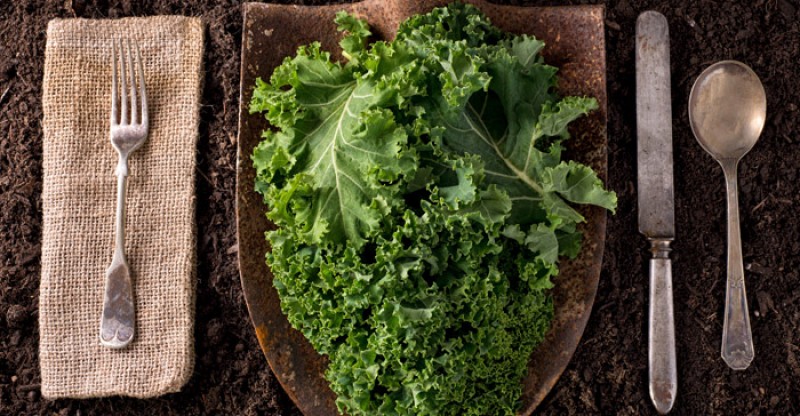






How often should I eat kale to lower my cholesterol? Can it substitute cholesterol-lowering meds?
Yet another cool superfood to check out!
Sure, try kale caesar salad. You’ll never eat regular caesar salad again :).
Looks just like lettuce, but I guess this one’s a lot healthier 🙂
Hello Robert! Yeah, kale is super-beneficial for health!:)
What is the right amount of kale for 7-year-old child? Are there any precautions specifically for children?
Wow…what a healthy food! but it’s to much bitter for me… Is there any way to get rid of it?
Hello Dorothy! You can massage kale a little to reduce its bitterness:)
I always blend my kale along with other veggies and fruits. Am I still getting everything kale has to offer? Even though this while article really just talks about kale being cooked or steamed. So I’m not sure I’m getting all of its benefits when I blend it.
Hello Brenda! Yes, kale can lose some percentage of its benefits but it is still good for you:)
Is it possible to grow kale at home? I mean, indoors? Thanks!
Does cooked kale still contain all the nutrients? I’m not a fan of its flavor, frankly speaking.
I drink kale smoothie every morning for already a year and I see how beneficial it’s for my body, my skin looks better, fresh and rejuvenated. Needless to say, I’ve become more energetic and focused!
Kale benefits are amazing but it’s too bitter for me. What can I mix it with to smooth the taste?
if the kale is steamed then stored in the refrigerator for future blending in a smoothie do you still get the benefits of steamed kale.